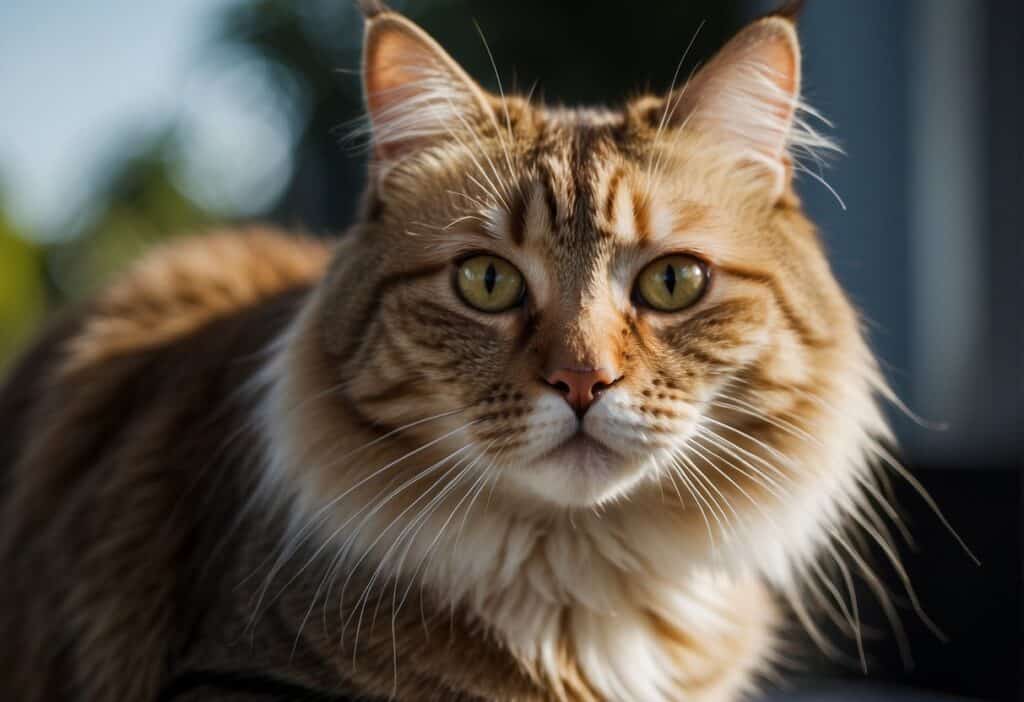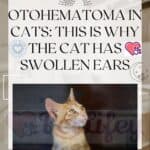The Cat Has Nausea: Understanding Causes and Remedies

Nausea in cats can be disturbing to witness, as it often indicates that your pet is experiencing discomfort. It’s characterized by a lack of appetite, excessive drooling, and retching, which may or may not be accompanied by vomiting. Understanding the potential causes of these symptoms is crucial. Just like humans, cats can have an upset stomach for a variety of reasons, ranging from dietary indiscretions to more serious health concerns. Your cat might have ingested something it shouldn’t have, or its body may be reacting to a new food or supplement. Other factors such as hairballs, infections, or ingested toxins also contribute to gastrointestinal upset.

Vomiting is one of the more visible signs that your cat may be nauseous. It can occur suddenly, following the ingestion of something disagreeable, or it could be a symptom of an underlying condition that requires medical attention. Observing the frequency and content of vomiting is important, as it can help you and your veterinarian determine the severity of the issue and the best course of action.
If your cat displays signs of nausea or vomiting, pay close attention to its environment and any recent changes that could have upset its stomach. A consistent diet, a stress-free environment, and regular interaction patterns are important for your cat’s digestive well-being. Assess their condition, considering whether they’ve had access to potentially harmful substances or if they’ve been exhibiting other symptoms such as lethargy or diarrhea. If the issue persists or is severe, consult a veterinarian who can provide a thorough examination and suggest appropriate treatments or dietary adjustments.
Understanding Cat Nausea
Nausea in cats is typically a clinical sign indicating discomfort that may stem from various underlying conditions. It’s important for you, as a pet owner, to recognize the potential causes and symptoms to effectively address this issue.
Common Causes of Nausea in Cats
- Hairballs: Accumulation of hair in the gastrointestinal tract.
- Diet: Sudden changes or food intolerances can cause digestive upset.
- Ingestion of toxins or foreign bodies: Consumption of inedible items or toxic plants.
- Parasites: Worms or other parasites residing in the intestines.
- Health Conditions: These include:
- Inflammatory bowel disease
- Liver disease, including hepatic lipidosis
- Diabetes mellitus
- Kidney disease
- Hyperthyroidism
- Pancreatic issues
- Infectious diseases
Symptoms of Nausea in Cats
- Changes in appetite or weight: Look for loss of appetite or weight loss.
- Gastrointestinal symptoms: Vomiting, regurgitation, and diarrhea may be present.
- Behavioral changes: Increased licking, especially around the lips, drooling, or retching indicates distress.
Why Nausea Is a Clinical Sign Not a Disease
Nausea itself is not a disease but a manifestation of potentially numerous ailments. It’s a sign that should prompt a deeper investigation into your cat’s health to discover the underlying cause, which can range from mild to serious conditions.
Specific Conditions Associated With Nausea
- Chronic Gastrointestinal Disorders: Inflammatory bowel disease can result in chronic nausea.
- Metabolic Disorders: Diabetes, kidney disease, and hyperthyroidism often lead to gastrointestinal symptoms.
- Liver Complications: Liver disease can cause nausea due to the accumulation of toxins in the blood.
- Endocrine Issues: Thyroid disease, particularly hyperthyroidism, is a common ailment in older cats that can cause nausea.
- Infectious Diseases: Bacterial, viral, or fungal infections can upset the stomach.
- Obstructions: Linear foreign bodies or tumors can block the intestines, causing nausea.
Diagnostic Procedures
When your cat is experiencing nausea, a thorough diagnostic process is essential to identify the underlying cause and ensure proper treatment. Your veterinarian will use a combination of methods to assess your cat’s health comprehensively.
Physical Examination and History
Your veterinarian will start with a detailed physical examination to check for signs of discomfort, pain, or fever that might be causing nausea. They’ll observe your cat’s behavior, examine its abdomen for any abnormalities, and assess overall body condition. Alongside the physical, the vet will gather a comprehensive history, including dietary habits and any recent incidents that may contribute to the condition.
Laboratory Testing
Blood tests are critical to evaluate your cat’s health, including a complete blood count (CBC) to check for infections or anemia, and a chemistry panel to assess kidney, liver, and pancreatic function, as well as electrolyte levels. Urinalysis can help in diagnosing urinary tract diseases, and fecal analysis is necessary to rule out parasites.
Advanced Imaging
- X-rays (radiography): Useful for detecting obstructions, foreign bodies, or structural abnormalities in the stomach and intestines.
- Ultrasound: Provides a more detailed view than x-rays and can identify masses, thickening of the gastrointestinal tract walls, or other specific internal conditions.
- Endoscopy: Involves the use of a camera on a flexible tube to visually inspect the upper gastrointestinal tract; may also be used to collect biopsy samples.
Biopsy and Other Invasive Tests
If non-invasive tests are inconclusive, your veterinarian may proceed with more invasive procedures:
- Biopsy: Tissue samples from the stomach or intestines are obtained surgically or via endoscopy to check for neoplasia or other microscopic diseases.
- Barium X-ray: A contrast material, barium, is fed to the cat, and sequential x-rays are taken to highlight the passage through the gastrointestinal system, aiding in detecting abnormalities.
With a methodical approach to these diagnostic procedures, your veterinarian can determine the most probable cause of nausea in your cat and create an effective treatment plan.
Treatment Approaches
When your cat is dealing with nausea, understanding and applying the correct treatment approaches is critical to their recovery. The treatment plan may include immediate care, dietary adjustments, medication, and in cases of chronic conditions, long-term strategies to manage health.
Immediate Care and Stabilization
If your cat is experiencing severe nausea and vomiting, the immediate concern is preventing dehydration. Hydration may need to be addressed with subcutaneous fluids or intravenous therapy, especially if your cat has been unable to keep water down. It’s important to monitor for signs of dehydration such as lethargy and dry gums and seek veterinary care promptly for stabilization.
Dietary Management
Dietary changes often play a vital role in managing cat nausea. Starting with a bland diet —boiled chicken or white fish— can help soothe your cat’s stomach. Gradually reintroducing your cat’s regular food by incorporating it into the bland diet can help ease them back to normal eating habits. Remember, any diet change should be done gradually to prevent further irritation to your cat’s digestive system.
Medication and Supplements
Your veterinarian may prescribe antiemetic medication to help control vomiting and improve appetite. Maropitant (marketed as Cerenia) is commonly used to combat nausea and vomiting in cats. Over-the-counter supplements for digestive support may also be recommended, but always consult with your vet before starting any new medication or supplement.
Managing Chronic Conditions
Chronic conditions such as kidney disease, liver disease, or inflammatory bowel disease can lead to persistent nausea. Addressing these underlying issues is essential for long-term management. This may involve specialized medications, ongoing dietary modifications, and routine veterinary checkups to monitor the condition and adjust the treatment as needed. Chronic vomiting or changes in appetite are signs that require immediate veterinary attention to prevent complications.
Home Care and Prevention
Proactive measures in diet and lifestyle can be pivotal in preventing nausea in your cat. Consistent management helps mitigate symptoms and supports your cat’s overall health.
Diet and Lifestyle Adjustments
Addressing your cat’s diet is a fundamental step. Start by ensuring that their food is of high quality and free of ingredients that may cause allergies or sensitivities. Avoid sudden dietary changes, as these can upset your cat’s stomach. Instead, transition to new foods gradually over several days. For overweight cats, a gradual weight loss plan is crucial; rapid weight loss can lead to health issues, including nausea. Maintain a clean environment free from harmful plants and objects that could be ingested, leading to gastrointestinal upset.
- Focus on consistent feeding routines.
- Gradually introduce new diets or supplements.
- Monitor and maintain an appropriate weight for your cat.
Recognizing Early Signs of Illness
Be vigilant for early symptoms of nausea in cats, including reduced appetite, drooling, or excessive swallowing. Hairballs can also cause nausea, so regular grooming to minimize hair ingestion is vital. If your cat exhibits signs of illness such as diarrhea or persistent sickness, consult your veterinarian promptly for advice. Early intervention can prevent more serious complications and will guide you on the appropriate treatment depending on the underlying cause.
- Observe for changes in appetite or toilet habits.
- Groom regularly to reduce hairball formation.
- Seek professional guidance at the onset of symptoms.
Follow-up and Ongoing Management
Once your cat receives treatment for nausea, close monitoring is important. Follow your vet’s dietary recommendations, including any prescribed food or medication. If your cat’s condition was related to hairballs or allergies, ongoing management of these issues is necessary to prevent recurrence. This may include regular check-ups with your veterinarian to adjust the treatment plan as your cat’s health evolves.
- Adhere to vet-prescribed dietary plans.
- Schedule regular vet visits for continued health assessments.
- Address chronic conditions like allergies with long-term strategies.
When to See a Veterinarian
When your cat shows signs of nausea, promptly determining when to seek veterinary care is crucial. Recognizing emergency symptoms, scheduling regular health check-ups, and understanding the importance of timely intervention can be the difference between a quick recovery and the progression of a potentially serious condition.
Emergency Symptoms
If your cat exhibits any of the following symptoms, consider it an emergency, and you should seek immediate veterinary attention:
- Persistent Vomiting: More than 24 hours of ongoing vomiting could indicate a serious underlying cause.
- Blood in Vomit: The presence of blood in the vomit is a sign of internal bleeding or other severe conditions.
- Signs of Dehydration: These can include a dry mouth, sunken eyes, and lethargy.
- Fever or Pain: If your cat has a high fever or shows signs of pain, it could point to an infection or inflammation, such as peritonitis.
- Physical Distress: Signs like trouble breathing, severe lethargy, or an inability to stand require immediate veterinary care.
Scheduling Regular Health Check-ups
To prevent emergency situations, it’s recommended that you:
- Keep up with regular veterinarian appointments: This ensures any early signs of diseases are caught.
- Maintain up-to-date vaccinations: Vaccinations can help prevent certain diseases that may cause nausea and vomiting.
Importance of Timely Intervention
Addressing symptoms of nausea early can help avoid complications by:
- Identifying the underlying cause through a physical examination, which leads to appropriate treatment.
- Preventing dehydration which can quickly become critical in cats due to their small body size.
- Mitigating pain and discomfort thereby reducing stress, which is known to exacerbate health issues in cats.







